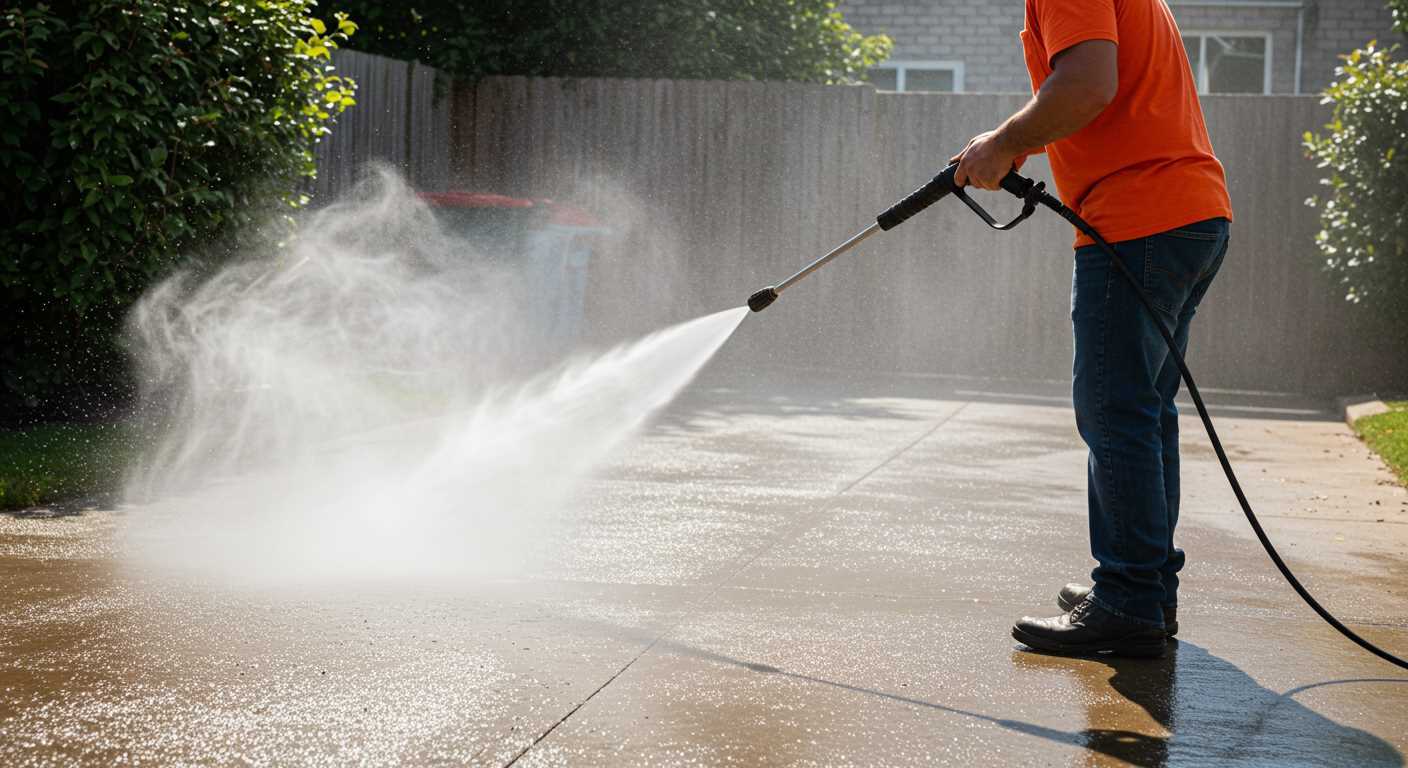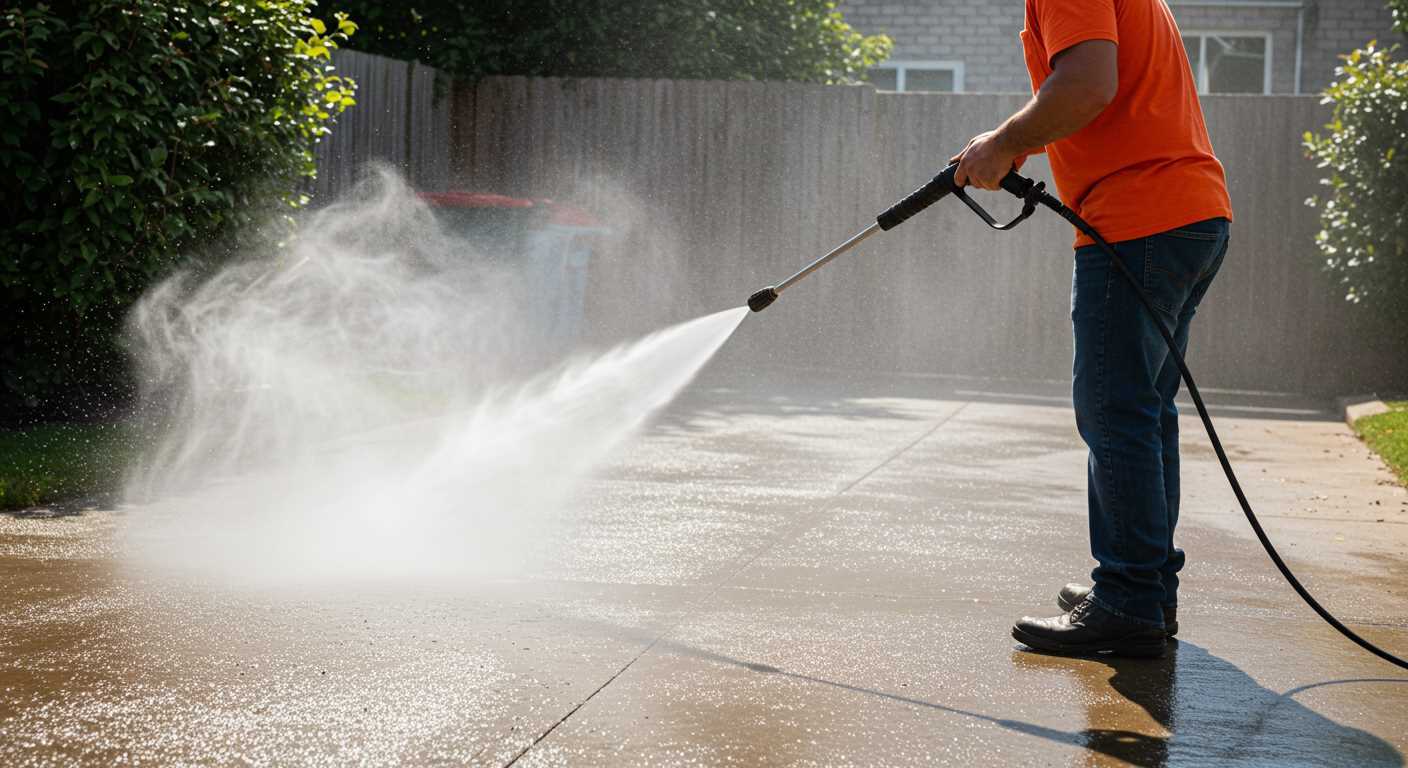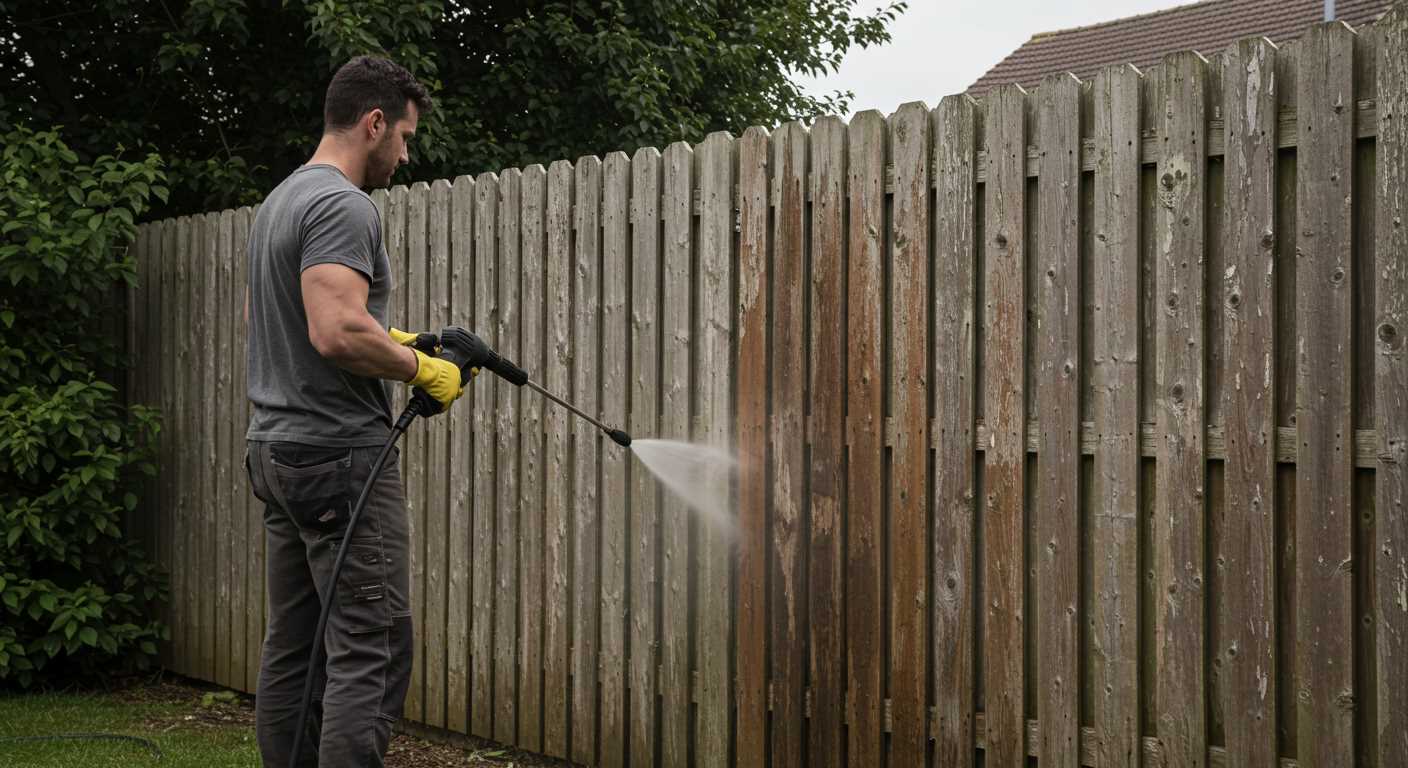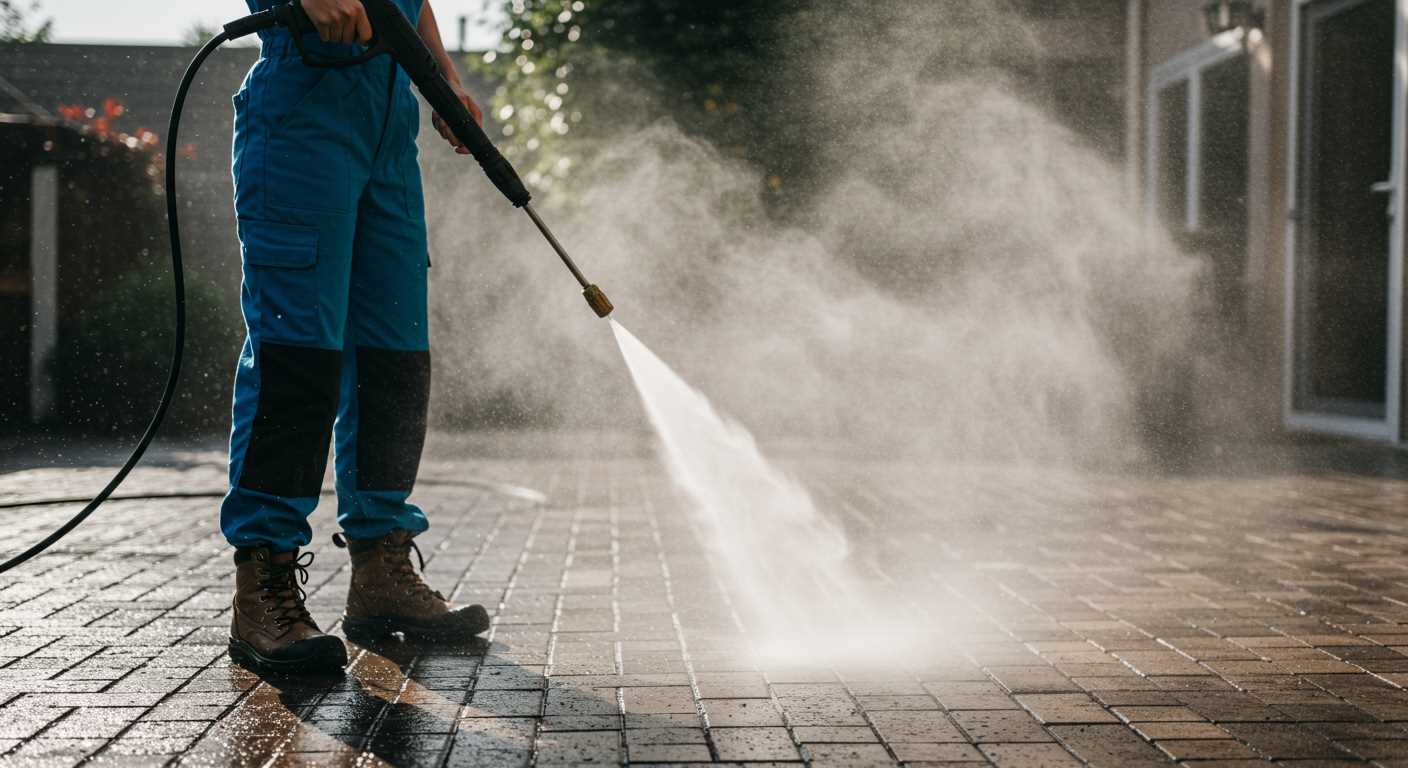




I’ve seen it happen. One moment, you’re blasting away dirt from a patio, and the next, you hear that dreaded sound–a shatter. The question arises: can a high-powered cleaning tool really cause glass to crack or break? The answer is yes, it’s possible, but it depends on several factors.
First off, the distance between the nozzle and the glass is crucial. From a closer range, the force exerted can exceed what the glass can handle, particularly if it’s already compromised or has existing chips. I remember my colleague accidentally directing the stream too close to a window during a demonstration. The impact resulted in a spider web of cracks that left everyone in shock. Always maintain a safe distance–at least 2 to 3 feet is a good rule of thumb.
The type of nozzle you’re using also plays a significant role. A narrow spray pattern, like a pin-point jet, concentrates the force in a small area, increasing the likelihood of damage. I prefer wider nozzles for surfaces near glass to distribute the pressure more evenly. It’s a simple adjustment that can save you from costly repairs.
Lastly, consider the condition of the glass itself. Older, single-pane windows are much more susceptible to damage than modern double-glazed varieties. I often advise customers to inspect their windows before starting any cleaning project. If you notice any imperfections, it might be wise to clean those areas by hand instead of risking it with a powerful machine.
Can a High-Pressure Cleaner Damage Glass?
Using a high-pressure cleaner on glass surfaces is a delicate matter. From my experience, when the nozzle is set to a high setting, the risk of shattering or cracking increases significantly. It’s crucial to maintain a safe distance and use a fan spray instead of a concentrated jet. I recall a job where I accidentally got too close to a large window, and the impact caused a hairline fracture. It was a costly mistake and taught me to be cautious.
Always inspect the glass for any existing vulnerabilities before cleaning. Older windows or those with prior damage are more susceptible to harm. If you’re unsure, it’s wiser to approach with a lower pressure setting. For instance, I often recommend starting at around 1,500 PSI for glass surfaces like patio doors, gradually adjusting if necessary. Additionally, ensure that the glass is clean before using the cleaner; dirt and debris can cause scratches and further stress on the material.
After a session, double-check the glass for any signs of distress. Taking this precaution can save you from unexpected repair costs. If you’re also a fan of cooking, you might find yourself wondering how long to put chicken in pressure cooker; it’s all about precision, just like in cleaning. Always prioritise safety and care when handling any cleaning equipment, especially around fragile surfaces.
Understanding Pressure Washer Ratings and Settings
To avoid damage while using a high-pressure cleaner, it’s crucial to understand the specific ratings and settings of the equipment you’re handling. Here’s a breakdown of what you should know:
- PSI (Pounds per Square Inch): This metric measures the force of the water. For tasks like washing cars or delicate surfaces, aim for around 1200-1900 PSI. Higher ratings, such as 3000 PSI and above, are suitable for tough stains on concrete or brick.
- GPM (Gallons per Minute): This indicates the water flow rate. A higher GPM means faster cleaning but can also lead to increased water usage. For most household tasks, 1.5 to 2.5 GPM is adequate.
- Nozzle Selection: Different nozzles produce various spray patterns. A 0-degree nozzle delivers a concentrated jet for stubborn grime, while a 40-degree nozzle is more suitable for rinsing delicate surfaces. I’ve often switched nozzles mid-task to adapt to the surface I’m cleaning.
In my experience, adjusting these settings appropriately can make a significant difference. For instance, while cleaning a patio, I started with a 25-degree nozzle at 2000 PSI. I realised the surface was more resilient than I thought, so I switched to a 15-degree nozzle for a more focused blast on the ingrained dirt. This approach saved time and ensured a thorough clean without causing any damage.
Keep in mind the distance from the surface as well. Maintaining a consistent distance, usually around 12-24 inches, helps to avoid accidental harm. I once got too close while trying to tackle a particularly stubborn stain, resulting in slight etching. A lesson learned!
Lastly, always consult the manufacturer’s guidelines for the specific model you’re using. Each has its unique recommendations that can guide you in choosing the right settings for various tasks. Following this advice can help maintain both the equipment and the surfaces you’re cleaning.
Types of Windows and Their Vulnerability to Pressure Washing
When it comes to cleaning, not all glass installations are created equal. I’ve seen various types of panes, and their resilience can vary significantly. For instance, tempered glass is often used in modern homes due to its strength. It can withstand higher forces compared to standard glass, making it a safer choice for exterior applications. However, while it’s more durable, it’s not completely invulnerable. High settings can still cause cracks or shatter if the angle is wrong.
On the other hand, single-pane windows are much more susceptible to damage. In my experience, I’ve witnessed these break from a distance even at lower settings. If you’re using a hard stream, the risk multiplies. If your home has older installations, I would advise extreme caution. These panes are not designed to handle the same pressures as their modern counterparts.
Vinyl-framed windows are another category worth discussing. They offer decent resistance to force, but the seals can weaken over time. When cleaning these, avoid focusing the stream on the frame for too long, as it can warp the material and compromise the unit’s integrity.
Then we have double-glazed units. These provide better insulation and soundproofing but can be delicate if the seals have aged. If you choose to clean these, ensure you’re using a moderate distance and a fan spray rather than a concentrated jet. I’ve seen double-glazed panels that appeared intact but were leaking after a strong blast, so always inspect your windows beforehand.
Lastly, custom or decorative glass can be particularly vulnerable. These are often thinner or treated differently, making them more prone to damage. If you have stained glass or intricate designs, it’s best to avoid any high-force cleaning altogether. Instead, consider hand-cleaning with gentler methods to preserve their beauty.
In conclusion, knowing your glass type is essential for safe cleaning. Always assess the condition of your windows beforehand, and when in doubt, err on the side of caution. A little extra care can save you from costly replacements down the road.
Common Mistakes When Using a Pressure Cleaner Near Glass
Avoid directing the stream at an angle that creates a concentrated force on the glass; this can easily lead to cracks or shattering. I recall a time when a colleague aimed too closely at a window while cleaning a building’s façade. The intense force caused a small crack that spread rapidly, resulting in costly repairs.
Another frequent error is using a nozzle with too narrow a spray pattern. A focused jet can exert excessive pressure on the glass surface. I once witnessed a homeowner using a zero-degree nozzle on their patio doors, and the impact was devastating. The glass shattered, leaving them with a hefty bill and an unpleasant clean-up task.
Many overlook the importance of maintaining a safe distance. Standing too close while cleaning can amplify the pressure on the glass. I recommend keeping at least two to three feet away, especially when tackling fragile surfaces. A friend of mine learned this the hard way when they decided to clean their windows up close, resulting in a costly mishap.
Neglecting to check for existing vulnerabilities, such as cracks or chips, before starting can lead to further damage. I always advise inspecting the surfaces beforehand. Once, I found a small chip during an inspection; we avoided using high force there, preventing a disaster.
Lastly, using the wrong cleaning solution can be detrimental. Some chemicals can weaken glass or leave residues that attract dirt. I’ve seen this issue arise when people use aggressive detergents without testing them first. Stick to products designed for glass surfaces to maintain clarity and integrity.
Safe Distance for Pressure Washing Around Windows
Maintain a distance of at least two feet from the glass surface during cleaning. This spacing reduces the risk of shattering while still allowing for effective cleaning. In my experience, approaching the surface too closely can lead to unintended damage, especially when using high settings.
Consider the Settings
Adjust the nozzle and pressure settings according to the task at hand. A wide spray pattern at lower settings minimises the impact on glass. I’ve learned that using a fan spray can effectively clean without the concentrated force that might cause harm. Always test on an inconspicuous area first.
Wind and Environmental Factors
Be aware of wind direction. Debris can be blown towards the glass, increasing the chance of damage. I recommend checking the weather conditions before starting. If it’s windy, consider postponing the task or adjusting your angle to keep the debris away from the windows.
Signs of Window Damage After Pressure Washing
Look for specific indicators to assess if your glass has suffered harm after cleaning. Here are key signs to watch for:
- Cracks: Inspect the surface for any visible fissures. Even hairline fractures can compromise integrity.
- Chips: Small chips around the edges or corners can lead to further deterioration if not addressed quickly.
- Discolouration: Notice any unusual spots or changes in tint? This could indicate damage to protective coatings.
- Water Leaks: If you notice moisture seeping into your home around the frame, it might suggest that seals have been compromised.
- Loose Seals: Pay attention to the condition of any weather stripping or seals. If these feel loose, it could be a sign of damage.
After cleaning, take a moment to thoroughly examine each pane. If you find any of these issues, consider consulting a professional for further evaluation and potential repairs. Ignoring early signs can lead to more significant problems later.
Preventative Measures to Protect Windows During Cleaning
Using a powerful cleaning tool requires careful planning to avoid damage to fragile surfaces. Here are some strategies I’ve developed over the years to safeguard glass structures while ensuring effective cleaning.
1. Use Protective Barriers
Before starting, consider applying protective barriers such as painter’s tape or cardboard around the edges of the glass. This simple step can significantly reduce the risk of impact from debris and water pressure, especially in high-risk areas.
2. Adjust the Cleaning Solution
Opt for a milder cleaning solution instead of harsh chemicals. This reduces the need for intense force during the washing process, minimising potential harm to the glass. I’ve found that using a diluted soap mixture can effectively remove grime without compromising safety.
3. Maintain a Safe Distance
A safe distance is crucial. I typically recommend keeping the nozzle at least 3 to 4 feet away from the glass surface. This allows for effective cleaning while limiting the impact force that can cause stress fractures.
4. Use a Low-Pressure Setting
During my years of testing, I discovered that using a lower setting is often sufficient for glass cleaning. Many units have adjustable settings; using a lower pressure can still achieve a clean surface while reducing the risk of damage.
5. Inspect and Clean Regularly
Regular inspections of the glass can help identify any existing vulnerabilities. Cleaning dirt and grime frequently prevents build-up, making future cleaning easier and less intensive.
6. Timing Matters
Avoid cleaning during extreme temperatures. Cold weather can make glass more brittle, while hot conditions can lead to rapid temperature changes, increasing the likelihood of cracks. I usually recommend cleaning during mild weather conditions.
7. Use a Soft Brush Attachment
Incorporating a soft brush attachment can provide a gentler clean, allowing for effective dirt removal without the harsh impact of direct water jets. This method has worked well for me, particularly on older or more delicate glass surfaces.
| Measure | Description |
|---|---|
| Protective Barriers | Use painter’s tape or cardboard to shield edges from debris. |
| Cleaning Solution | Choose milder solutions to avoid the need for high force. |
| Safe Distance | Keep the nozzle 3 to 4 feet away from glass surfaces. |
| Low-Pressure Setting | Utilise the lowest effective setting for cleaning. |
| Regular Inspections | Check for vulnerabilities and clean frequently. |
| Timing | Avoid extreme temperatures to prevent glass brittleness. |
| Soft Brush Attachment | Use for gentler cleaning on delicate surfaces. |
Alternative Cleaning Methods for Windows
Consider using a squeegee combined with a mixture of water and vinegar for a streak-free shine. This method is not only cost-effective but also gentle, ensuring that the glass remains intact without risk of damage. I once managed a cleaning project for a large office building where we utilised this technique on high-rise windows. The results were remarkable, and the client appreciated the eco-friendly approach.
Another effective approach involves using a soft cloth or sponge with mild dish soap. This method works well for removing grime without scratching the surface. During one summer, I tackled the outdoor glass of several homes that hadn’t been cleaned in years. The soap and water method allowed me to restore the clarity of the glass without any harsh chemicals or potential hazards that come with high-pressure equipment.
For stubborn stains, a paste of baking soda and water can work wonders. I remember a particularly challenging job at a café where hard water deposits had accumulated on the windows. After applying the baking soda paste and letting it sit for a few minutes, I gently scrubbed it away with a soft cloth, revealing spotless glass underneath.
If you’re dealing with tough spots or residue, consider using a commercial glass cleaner. These formulations are designed to break down grime effectively while being safe for glass surfaces. I’ve used them in various settings, from residential homes to commercial properties, and they consistently deliver excellent results.
Lastly, for those hard-to-reach areas, a telescopic pole fitted with a microfiber cloth can be invaluable. I’ve employed this method on numerous occasions, especially in multi-storey buildings where ladders are impractical. It allows for a thorough clean without the risk associated with climbing.
How to Assess Window Condition Before Pressure Washing
Inspect for cracks or chips prior to any cleaning routine. A simple visual examination can reveal small fractures that may worsen with high-velocity water. Pay close attention to corners and edges where stress is often concentrated.
Check the seals around your glass. Damaged seals can lead to moisture buildup inside panes, which may become more pronounced when subjected to strong water jets. If you notice condensation or fogging between layers, it’s better to delay any cleaning until repairs are made.
Consider the age of the glass. Older windows often have weakened structures. If they’re single-pane or have been in place for decades, exercise caution. Newer double-glazed units typically withstand more force but still require careful handling.
Assess the frame material. Wooden frames can absorb moisture, leading to expansion and potential warping. Vinyl and aluminium are generally more resilient but can become brittle over time. Inspect for any signs of wear or decay in the material.
Conduct a tap test. Lightly tap the glass surface with your fingernail. A dull sound may indicate internal weaknesses, while a clear tone suggests better integrity. If you hear something concerning, reconsider using a high-velocity cleaning technique.
Finally, consider the cleaning method you plan to use. For delicate surfaces, a commercial gas pressure washer may be too aggressive. Opt for lower settings or alternative methods that suit your window condition better.
Consulting Professionals: When to Seek Help
If you’re uncertain about the safety of your glass surfaces during cleaning, consulting experts is a wise choice. In my years working with various cleaning devices, I’ve seen countless instances where DIY attempts led to costly repairs. If your windows are particularly large, old, or have intricate framing, reaching out to professionals makes sense. They possess the experience and tools to manage delicate situations without risking damage.
Before scheduling a visit, assess the condition of your glass. If there are existing cracks or chips, it’s best to avoid any high-pressure cleaning altogether. Professionals can provide an inspection and recommend whether a gentler method is necessary. From my experience, the cost of a consultation often saves money in the long run compared to potential repairs.
Another scenario where expert assistance is beneficial involves multi-storey properties. Attempting to clean tall windows without the right equipment can be hazardous. Professionals have the necessary training and equipment to handle these situations safely. I recall a case where a homeowner attempted to clean second-storey windows and ended up causing more harm than good. Engaging a service ensures not only a thorough job but also safety for you and your property.
When dealing with specialised or antique glass, it’s imperative to consult with a professional. Many cleaning agents can be too harsh, and experts know how to treat these surfaces appropriately. I once worked with a customer who used a standard cleaning solution on a vintage window, resulting in irreversible damage. Knowledgeable professionals can guide you toward the right products and techniques for preserving your glass.
In summary, if there’s any doubt about the safety of your glass during cleaning, or if your windows present unique challenges, don’t hesitate to call in the experts. Their expertise can help prevent damage and ensure a successful cleaning experience.








.jpg)


